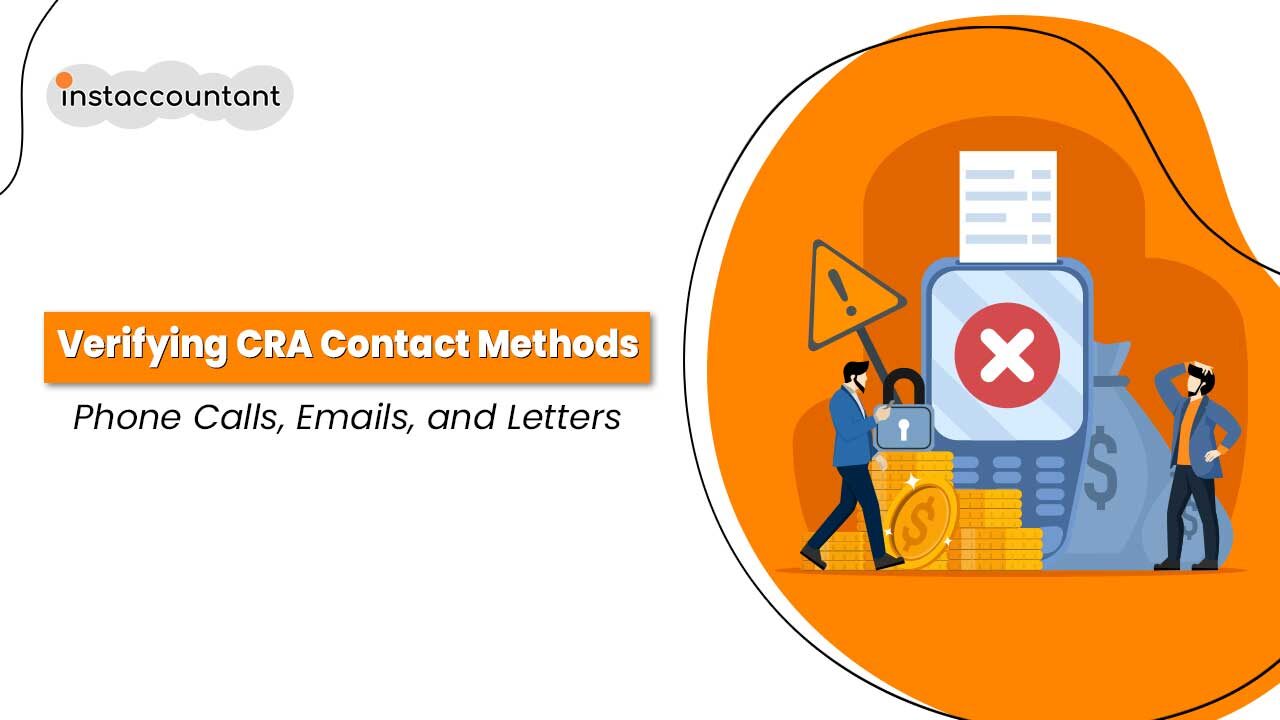Understanding the Canada Revenue Agency’s (CRA) contact methods is crucial for Canadian taxpayers. The CRA uses a range of channels to interact with individuals regarding tax matters and benefit programs. This includes phone calls, emails, letters, and sometimes text messages. Knowing how the CRA typically communicates helps you distinguish between legitimate contact and potential scams. Here’s a comprehensive guide on what to expect from CRA contact and how to handle them appropriately.
Phone Calls
The CRA may reach out to you via phone for several legitimate reasons. These calls can include:
- Verifying Your Identity: The CRA may ask for personal information to confirm your identity, such as your name and Social Insurance Number (SIN).
- Requesting Tax Details or Receipts: If you have submitted a return that requires further clarification or supporting documents, they may call to obtain these details.
- Reminders About Unfiled Tax Returns: They might contact you to remind you that your tax return is overdue, encouraging you to file as soon as possible.
- Inquiring About Financial Information: If there is an outstanding debt on your account, the CRA may ask for specific financial details to discuss your payment options.
Additionally, CRA calls can notify you about:
- Tax Return Reviews: These reviews ensure that the information you provided is accurate and compliant with tax regulations.
- GST/HST Registration Reviews: If you are registered for GST/HST, you may receive calls related to your account status.
- User ID/Password Issues: If you’re having trouble accessing your online account, the CRA may call to assist you.
- Assessment/Reassessment Notices: The agency may contact you regarding any changes or updates to your tax assessments.
- Audit Processes: If your account is selected for an audit, you might receive a call to discuss the next steps.
If you owe money, the CRA will request payment through official channels and may warn you about potential legal actions if the debt remains unpaid.
Important: When receiving a call from the CRA, always ask for the agent’s name and agent ID number. This ID is typically five digits long and will usually end with a code representing the province from which they are calling (e.g., ON for Ontario, WRO for Western Region, BC for British Columbia). This information can help you verify the legitimacy of the call.
Automated Telephone Messages
You may also receive automated telephone messages from the CRA. These are often reminders regarding:
- Filing Tax Returns: They may remind you of upcoming deadlines for filing your tax return.
- Installment Payments: If you’ve set up installment payments, they may remind you of upcoming due dates.
- GST/HST Deadlines: If you’re required to register for GST/HST, they may notify you of upcoming deadlines.
CRA automated messages are designed to provide important reminders and will not request personal or financial information. Always ensure the message is from an official CRA number before acting on it.
Letters
The CRA communicates through letters for several purposes, including:
- Verification Requests: Asking for confirmation of personal details or additional information related to your tax account.
- Tax Account Information: Requests for documents or receipts to support your tax filings.
- Debt Payments: Notifications about outstanding debts and instructions for payment.
- Reviews, Assessments, or Audits: Informing you about the review or assessment of your tax returns, or the initiation of an audit.
Letters from the CRA are typically sent through standard mail. They will provide clear instructions and contact details if you need to respond or provide additional information.
Emails
CRA emails are relatively rare and are usually used to:
- Notify You of New Messages: Inform you about new messages or updates in your CRA account.
- Send Requested Information: Provide links or forms that you have requested.
Caution: Never trust emails that ask for personal or financial information. The CRA will never request sensitive data through email. Always verify the authenticity of the email and never click on suspicious links or attachments.
Text Messages
Text messages from the CRA are used solely for multi-factor authentication purposes. The CRA does not send text messages through messaging apps like Messenger or WhatsApp. If you receive a text message claiming to be from the CRA that asks for personal or financial details, it is likely a phishing attempt.
Stay Safe
In a world where scams are prevalent, it’s crucial to verify any CRA contact before sharing personal details. If you receive a call or message that seems suspicious, do not hesitate to hang up and contact the CRA directly through their official channels. Always prioritize your security and ensure that any correspondence is legitimate before providing any personal information.




